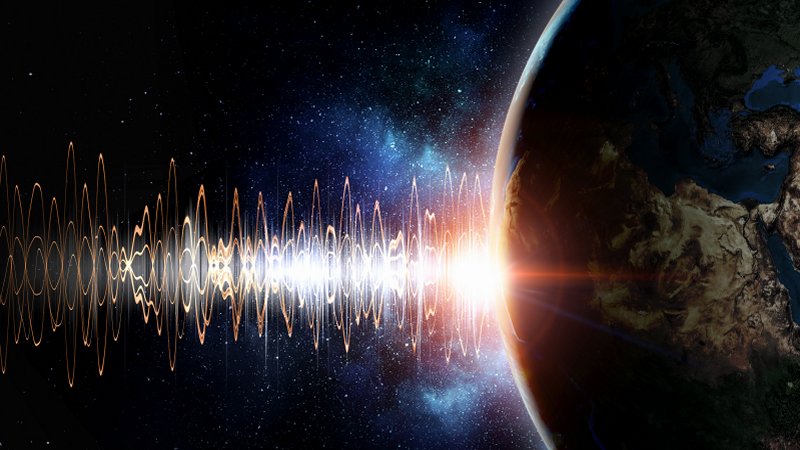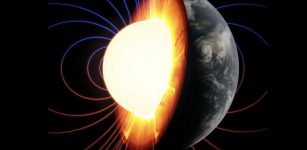Unexplained Pulse From Inside Earth Repeating Every 26 Seconds Puzzles Scientists
Cynthia McKanzie – MessageToEagle.com – Our planet is not a dead rock. Earth is very much alive. It breathes and produces certain sounds we cannot explain yet.
Scientists know the Earth is pulsating every 26 seconds, but it is still unknown what’s behind the phenomenon. The repeating pulse remains an unusual anomaly.
This sound should not be confused with the Schumann resonance that is the pulse of Mother Earth. This “heartbeat” refers to the frequency of the electromagnetic field of the Earth.
This natural frequency pulsation of 7.83 HZ was discovered in 1954 by the German physicist and Professor W.O. Schumann.
Today, Professor Schumann is credited with the discovery, but genius Nikola Tesla, a man who was much ahead of his time was aware of this resonance in 1899!
What we are discussing in this article is an entirely different pulse that puzzles scientists.
First Discovery Of Earth’s Strange Pulse
This unusual anomaly was discovered in the early 1960s by a researcher named Jack Oliver. Later the mysterious Earth pulse was also documented at the Lamont-Doherty Geological Observatory.

What is the cause of the repeating pulse? Credit: Sergey Nivens – Adobe Stock
Oliver did not have modern seismic technology at his disposal, but he suspected that the pulse was coming from somewhere “in the southern or equatorial Atlantic Ocean”. He also noticed the pulse was stronger in the Northern Hemisphere’s summer months (or, the Southern Hemisphere’s winter).
Sixty years have passed since Oliver discovered the unusual pulse and many scientists studying this phenomenon have tried to explain the origin of the sound.
Some suggested the pulse may be caused by changing weather because it seems stronger during storms. However, this theory has flaws, as we all know storms do not turn off and on every 26 seconds.
We cannot ignore the seismic activity in the world’s oceans.
Searching For Answers Underwater
Can the mysterious pulse be coming from an underwater volcano?
Scientists learned more about this curious phenomenon in 2005 when a graduate student named Greg Bensen successfully traced the origin of the pulse to a more narrow location, a single source in the Gulf of Guinea, off the western coast of Africa. Six years later, another team managed to get even closer to the location of the pulse, pinpointing the origin in an area of the Gulf of Guinea called the Bight of Bonny.”
Researchers started speculating the pulse was either caused by waves crashing on that coast, or by the Sun itself.
Could The Sun Be The Cause Of Earth’s Unexplained Clockwork Pulse?
One possibility is the Sun is somehow responsible for the unusual pulse. The largest solar flares are classified as x-class flares and can produce as much energy as a billion hydrogen bombs! They can be viewed as huge explosions in the solar system. So, naturally, we might wonder – How dangerous are these enormous solar flares and how can they harm our planet, and could they be the cause of the pulse that occurs every 26 seconds?
“Seismic noise basically exists because of the sun,” whose energy hits the equator and the poles unevenly, creating wind, storms, ocean currents, and waves, all of which work to displace and buffet energy onto the coastline.
“It’s like if you were tapping on your desk. It deforms the area near your knuckle, but then it’s being transmitted across the whole table,” explains Mike Ritzwoller, a seismologist at the University of Colorado, Boulder, who has studied the pulse for decades.
“So someone sitting at the other side of the table, if they put their hand, or maybe their cheek, on the table, they can feel the vibration,” Ritzwoller says.

The Pico Cão Grande (Portuguese for “Great Dog Peak”) is a landmark needle-shaped volcanic plug peak in São Tomé and Príncipe, in the Caué District of São Tomé Island in Parque Natural Obô de São Tomé. Its summit is 663 m (2,175 ft) above sea level,[1] and it rises about 370 m (1,210 ft) over the surrounding terrain. The volcanic plug was formed by magma solidifying in the vent of an active volcano. Credit: Philippe Bourachot – CC BY-SA 3.0
Currently, the perplexing seismic “blip” remains a great unsolved enigma but using sophisticated tools and technologies, scientists may soon be able to study the pulse more closely.
We still possess insufficient information about underwater volcanoes and earthquakes that occur beneath the waters.
In recent times, researchers have suggested a specific place on the edge of the enormous North American continental shelf, far below the ocean floor may be responsible for the clockwork pulse. There are also researchers who are convinced the answer to this mystery is volcanism, and most likely an active volcano on the island of São Tomé in the Bight of Bonny as evidence.
See also: More About Earth Changes
“We’re still waiting for the fundamental explanation of the cause of this phenomenon,” Ritzwoller says with a beat of optimism about the next decades of seismology.
“I think the point [of all this] is there are very interesting, fundamental phenomena in the earth that are known to exist out there and remain secret.”
Written by Cynthia McKanzie – MessageToEagle.com Staff Writer
Expand for references









